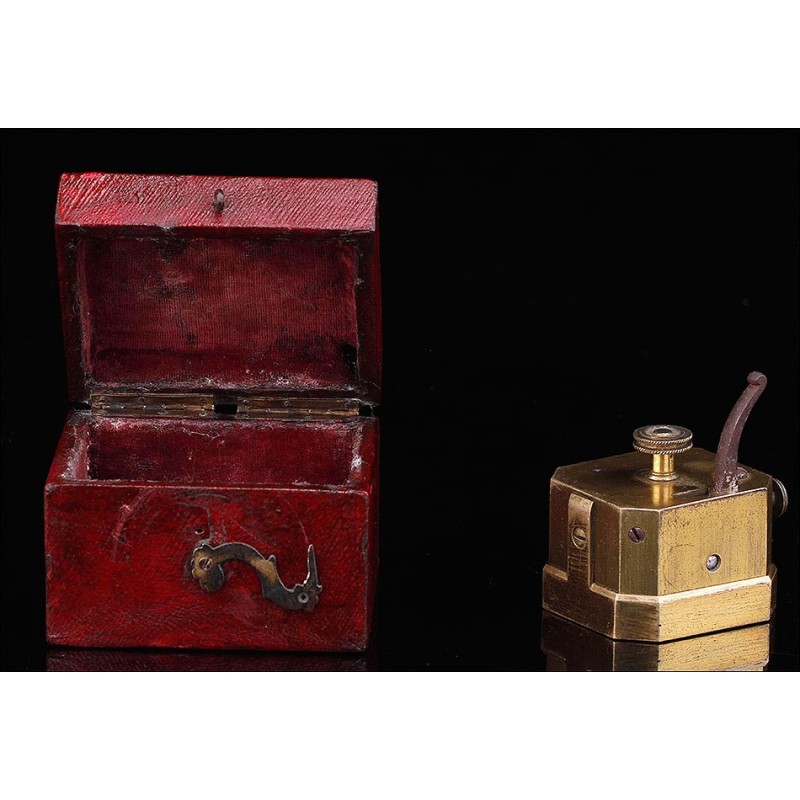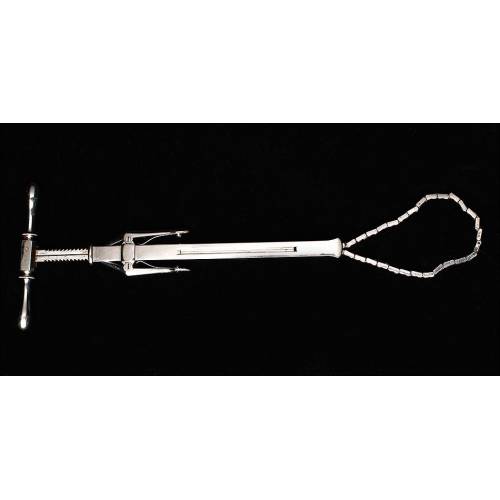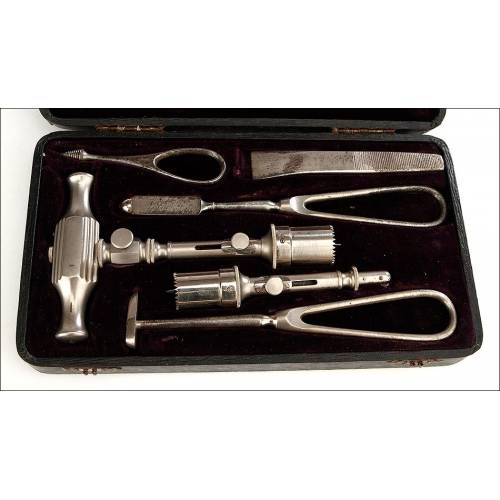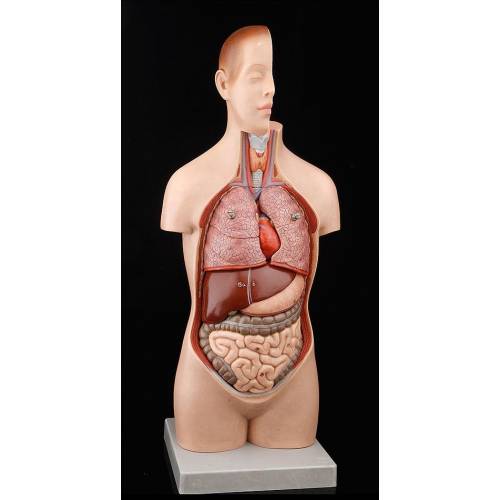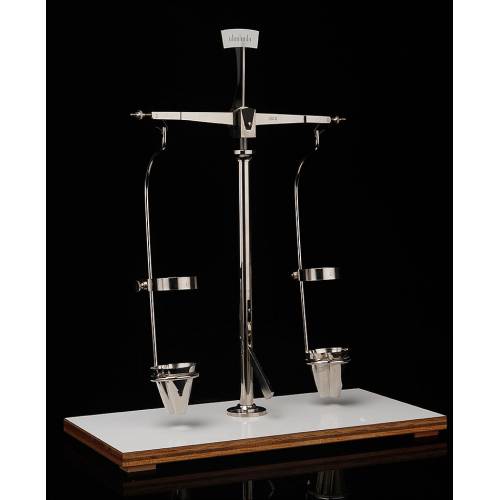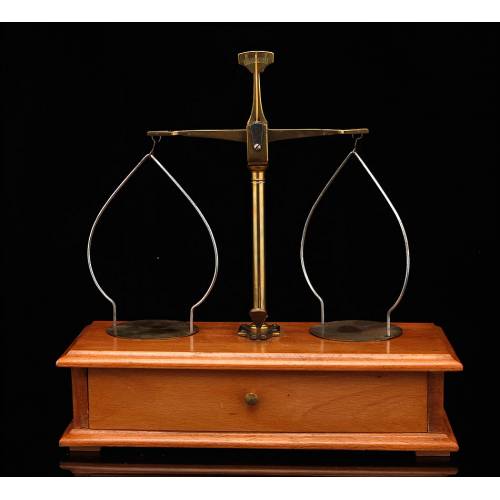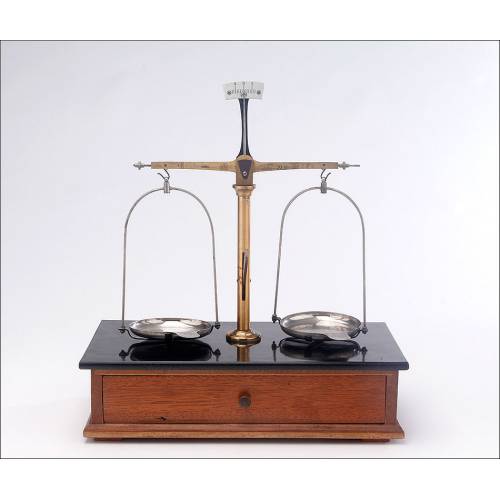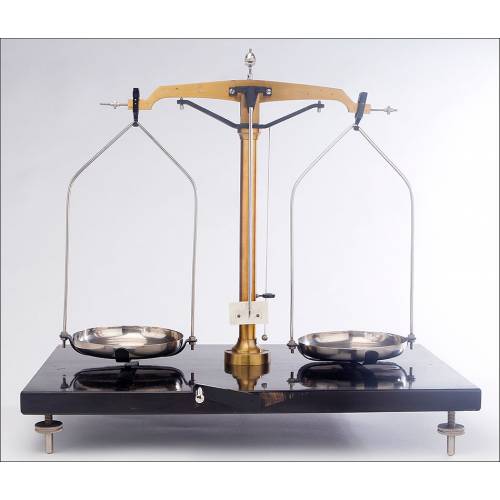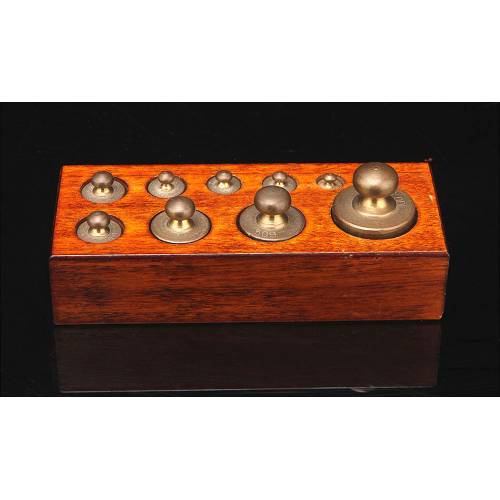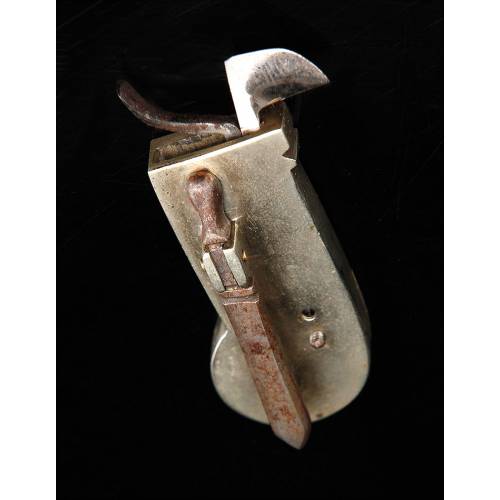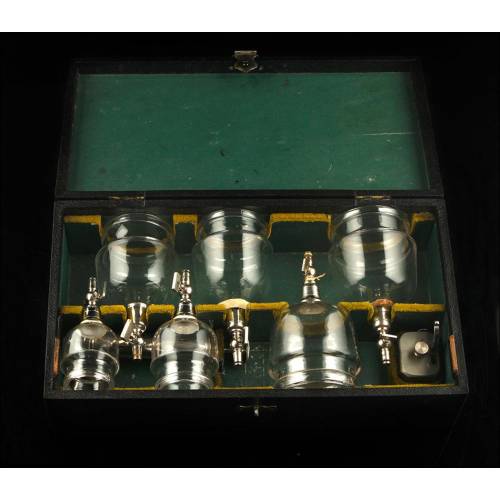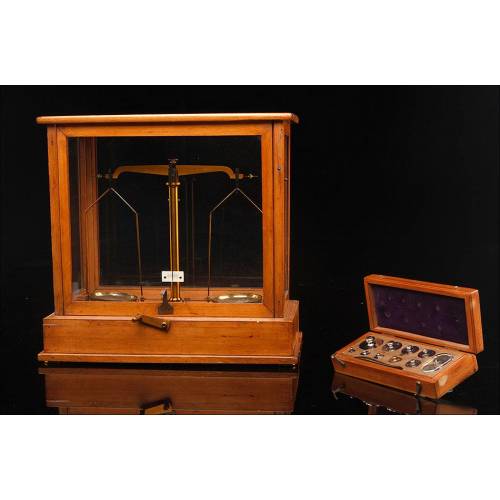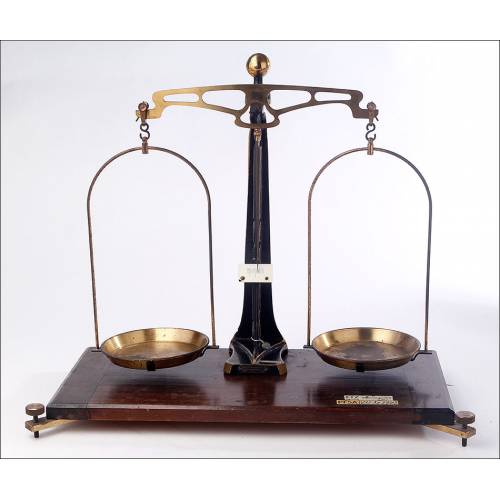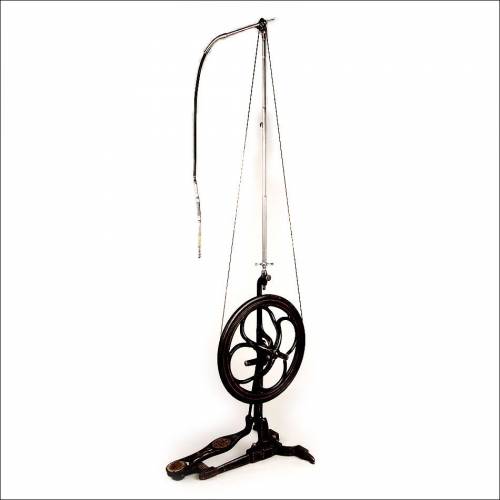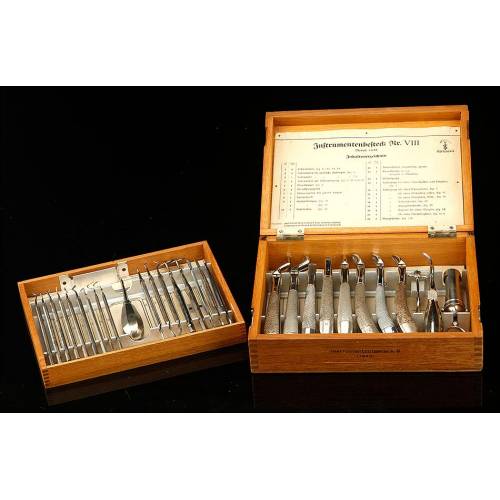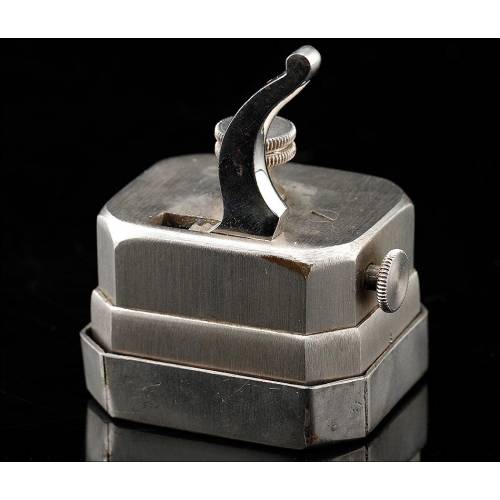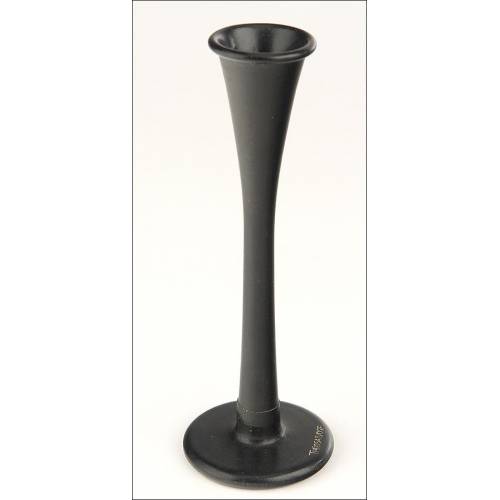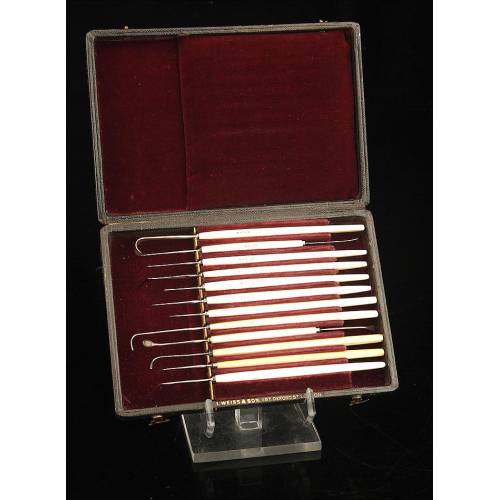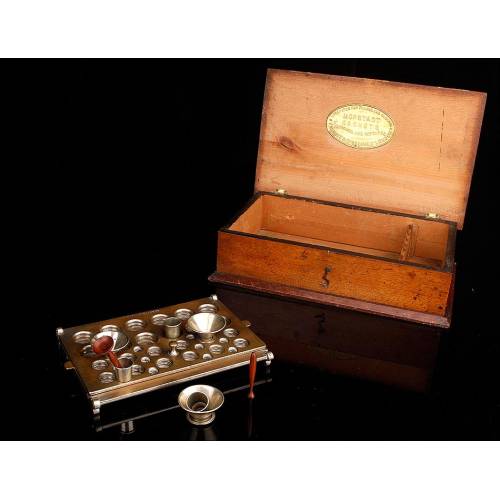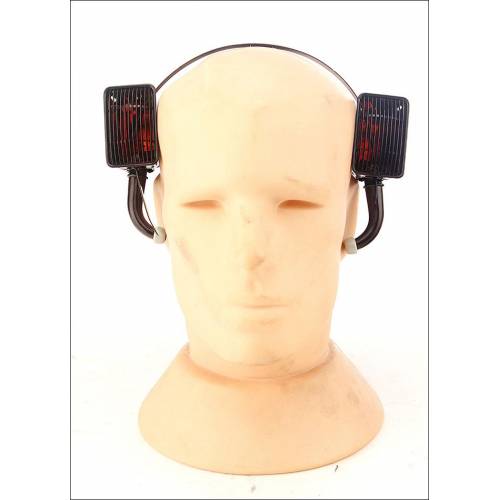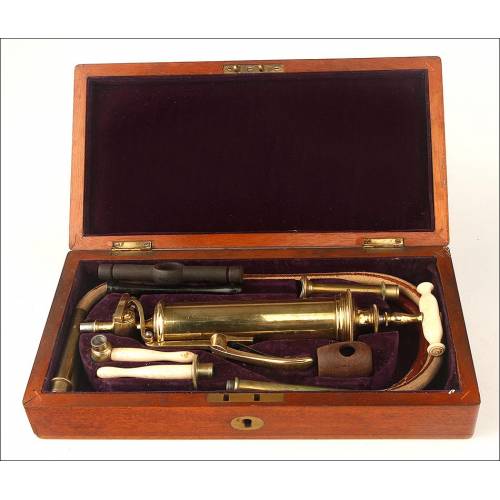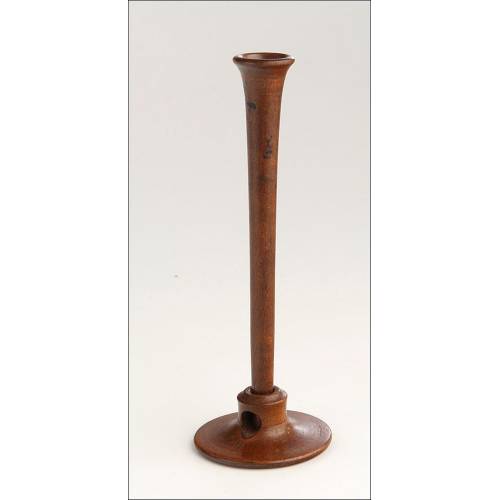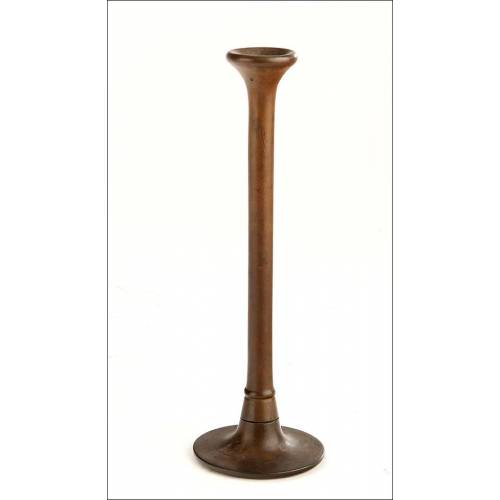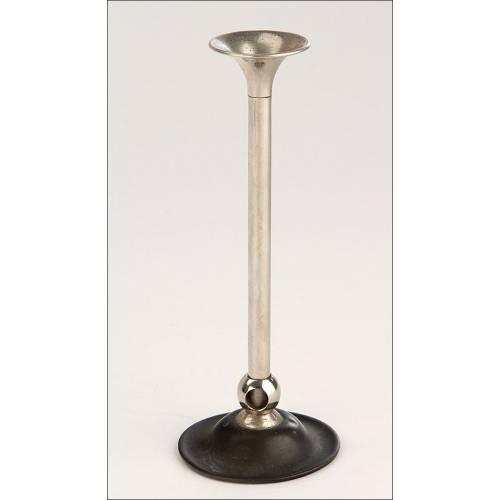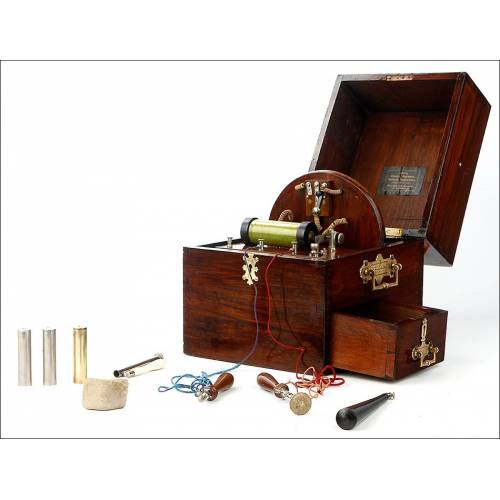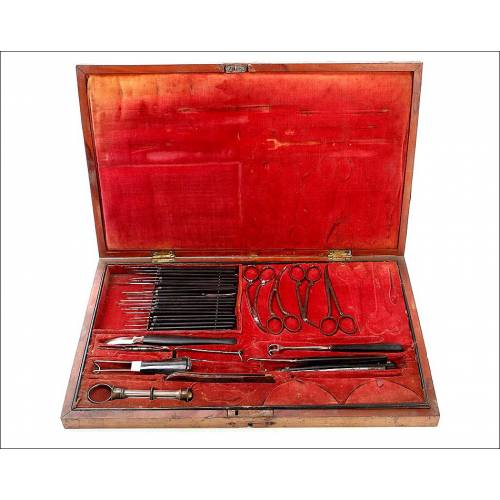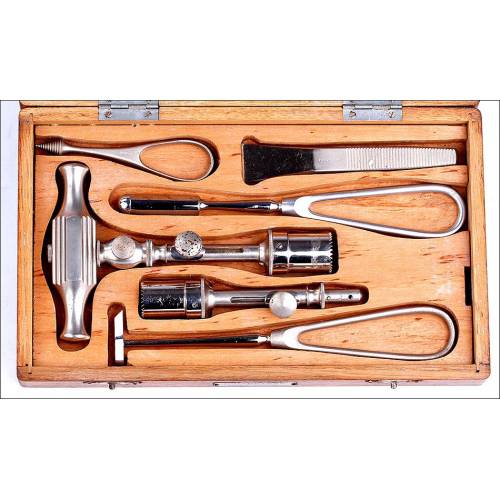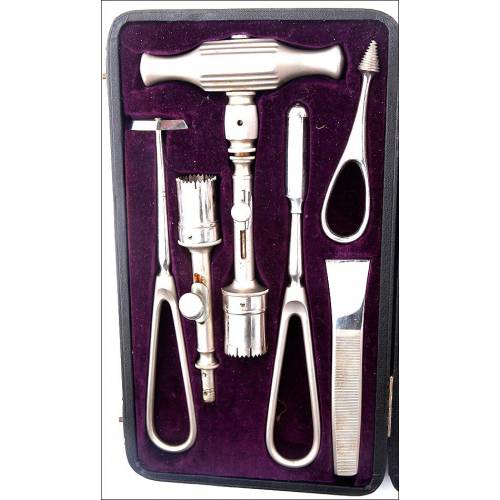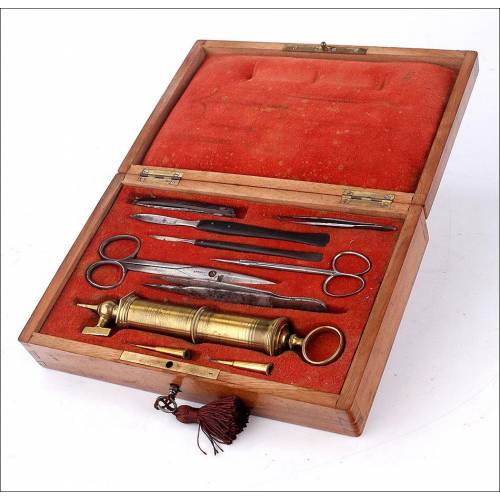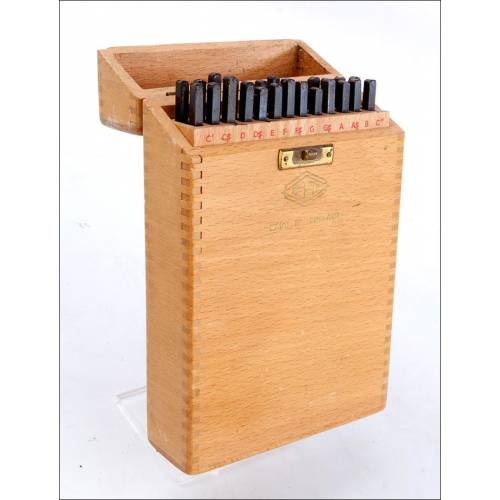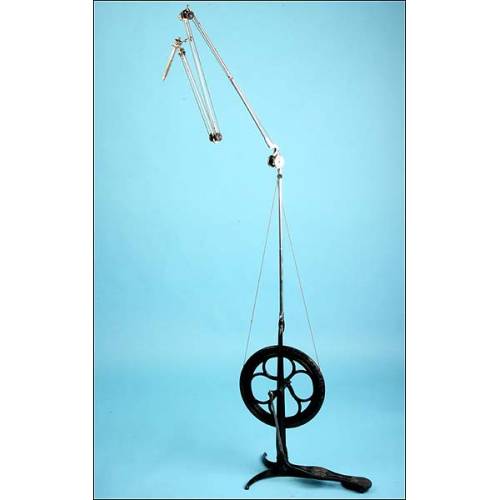A-946
Medical Scaler, S. XIX
Medical scaler used to bleed patients. XIX Century. Working and with case.
Sold!
Medical brass scarifier for bloodletting (phlebotomy), used to remove blood from patients. This device was made in England in the 19th century to be used by treatments that required bloodletting or bleeding patients. It is in good condition and works fine; it also comes in its original case. It is composed of a quadrangular brass box in whose base we can see sixteen parallel grooves. When the user action the top lever and press the botton, sixteen lancets that emerge through the grooves are suddenly released and cut the patients skin. The deep of these cuts can be reguled with the upper wheel. Scarifiers are very ancient instruments that have been used for centuries. Bloodletting, in fact, is a medical practice that dates from the 500 b.C, when started being use to keep a proper balance between the humours that were believed to form part of the human organism. This practice kept on being used until the 20th century, when the discoveries by Koch and Listers antiseptic theories eradicated it. Nowadays Eastern medicine does not consider it reliable or efficient (except for some concrete treatments) but it is thought to be dangerous because of the high risk of infection it carries. At the instruments base we can see the engraved manufacturers name, BLACKWELL, and the name of the city: BEDFORD CORT. Though the metal surface shows some signs of wear due to the use, the device is in good condition and great working order. The depth of the cuttings can be regulated by turning the screw located at the top of the scarifier. The case where this instrument is stored is made of red leather-covered wood. Is also well preserved and keeps the original shutting hook. As disturbing as antique, this scarifier will look great in a collection of rare and intriguing medical antiques. Measurements: Width: 1.9 in/5 cm. Height: 2.1 in/5.5 cm.

